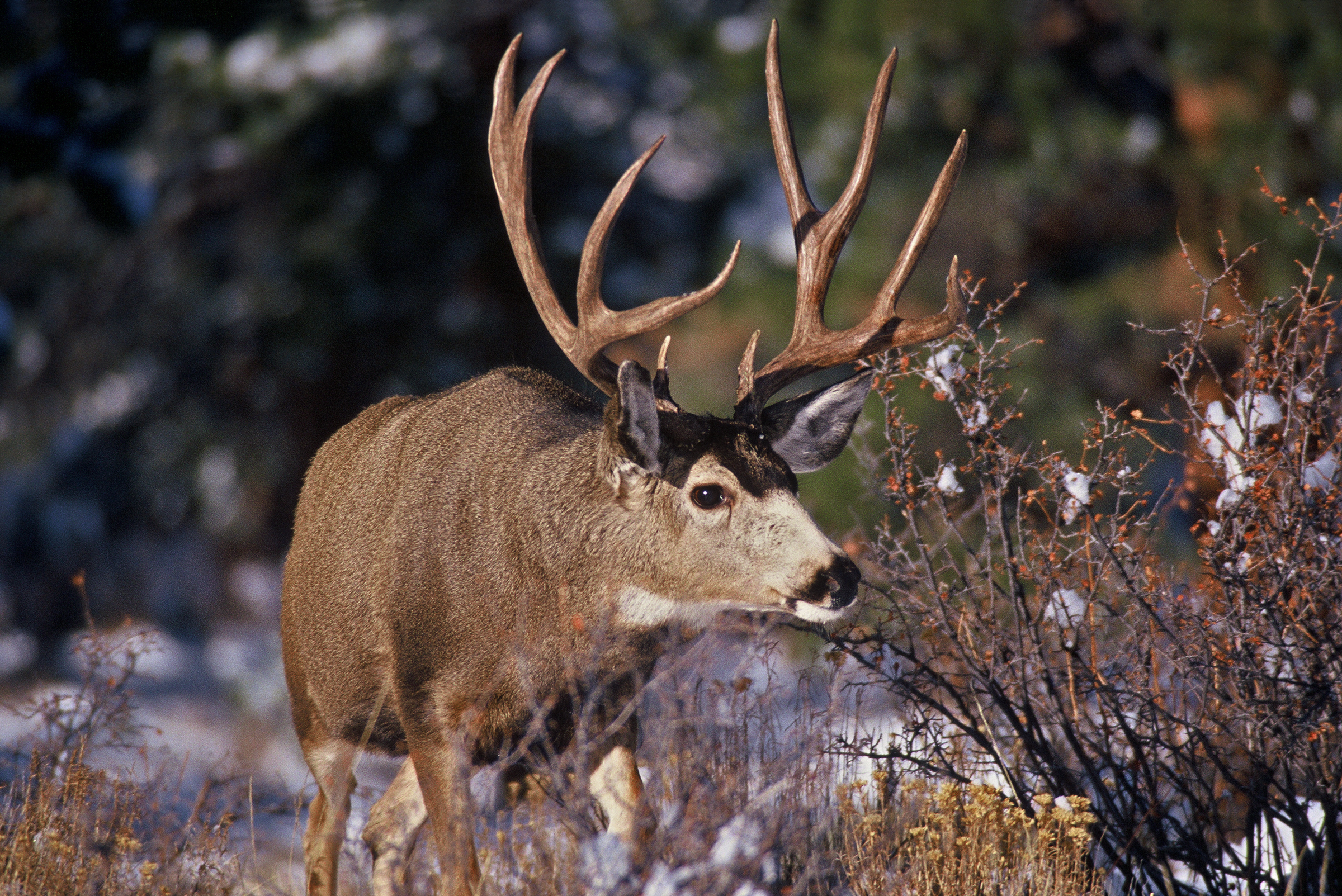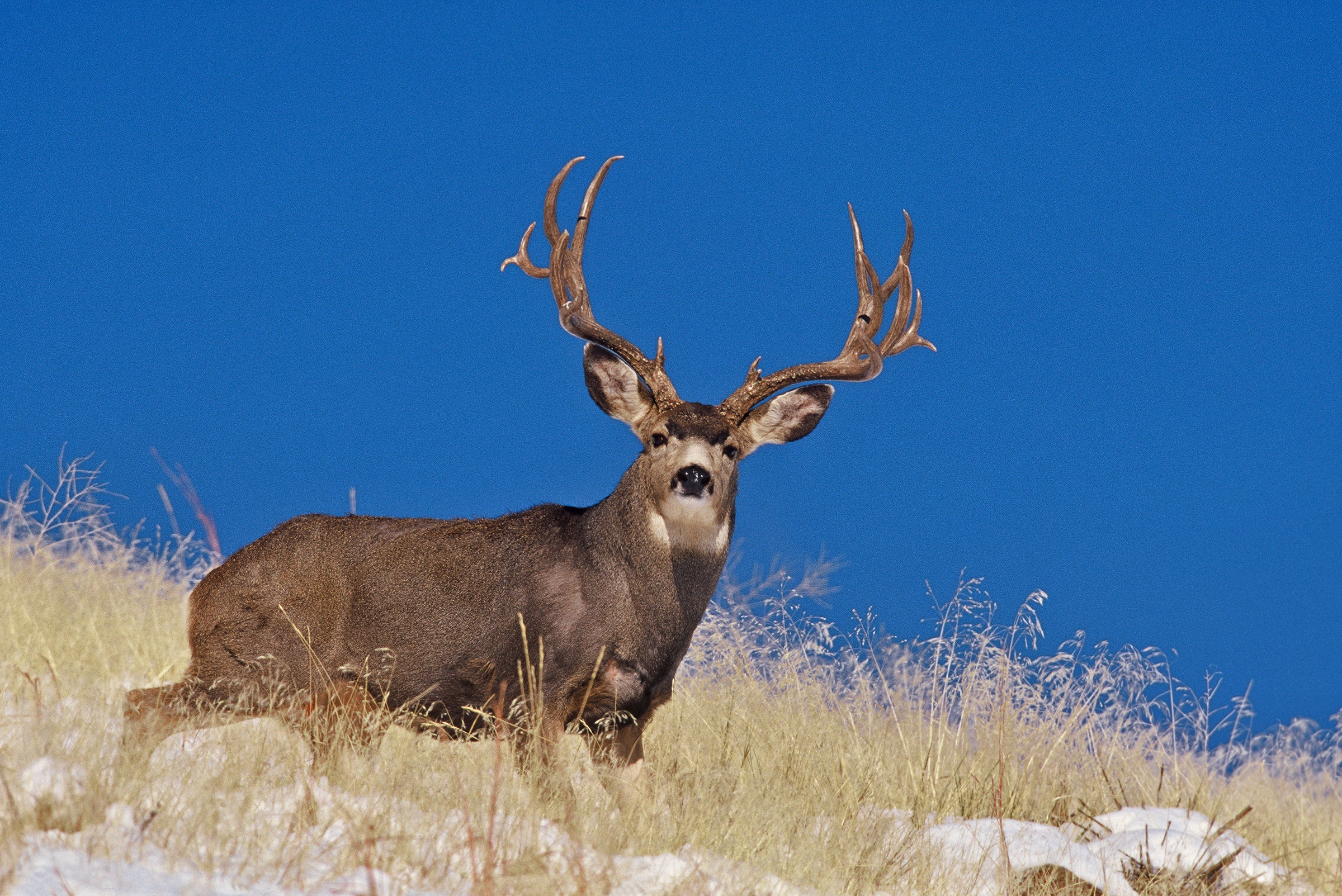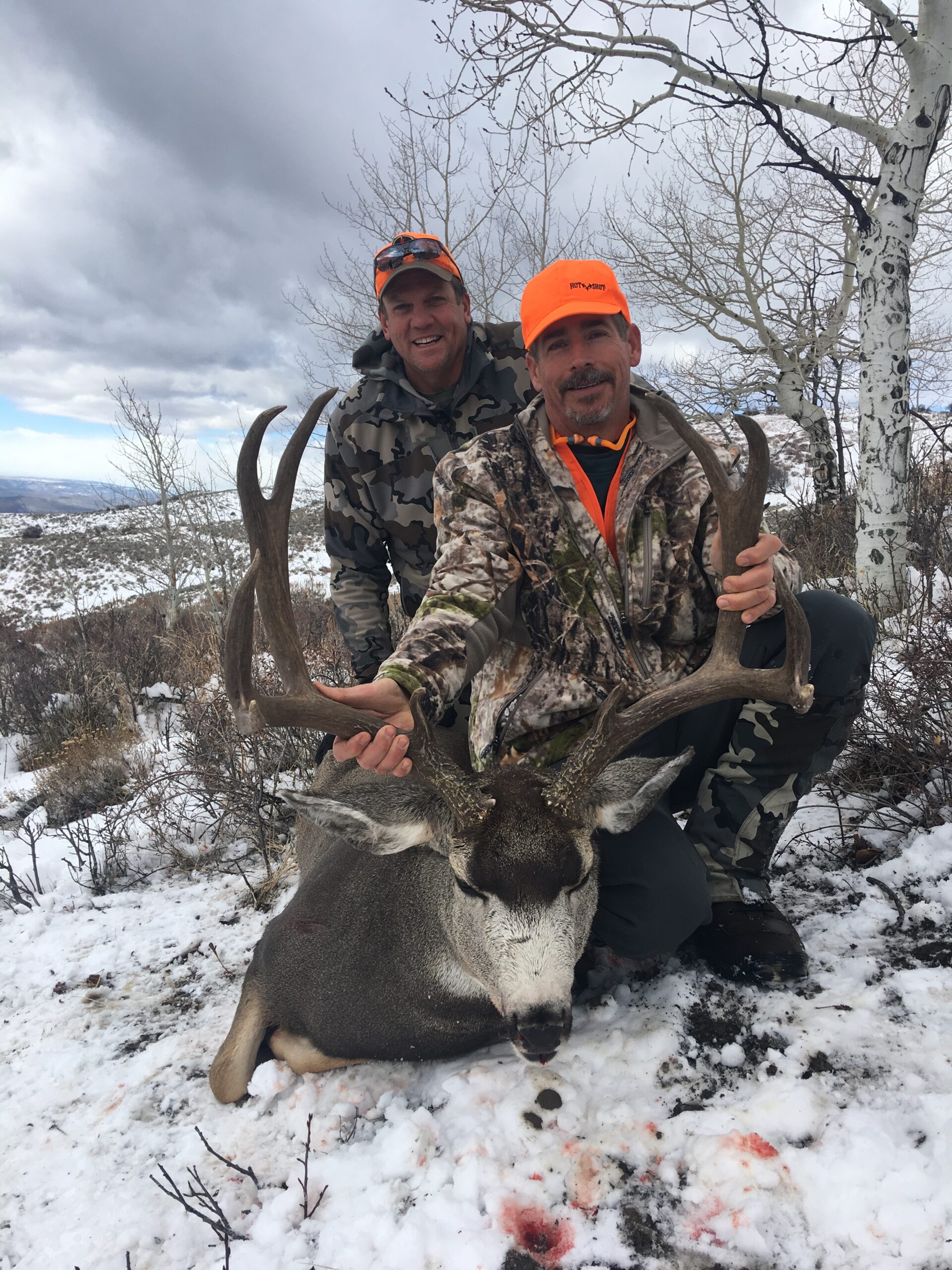
NOTICE: Certain links on this post may earn a commission for Western Hunter Magazine from Amazon or our other affiliate partners when you make a purchase. Thank you for your support.
Be More Successful Mule Deer Hunting - Part 2
In my article Be More Successful Mule Deer Hunting - Part 1, I talked about finding areas and places where mule deer bucks might experience less hunting pressure and environmental factors to get some age. Outwitting a mature mule deer buck is high on many hunters’ bucket lists. Here are some tips and ideas to narrow down your unit to more manageable chunks and eliminate those days of simply taking your bow or rifle for a hike.
Also in the last issue, Nate Simmons wrote an entire article on “Picking a Hunting Spot.” It’s a fantastic look at the nuts and bolts of how Nate goes about it, in a very methodical way. I use some of Nate’s tools and methods, but I also rely on my own internal hard drive of hunting experience.
Barstool Psychobabble?
When you do something long enough, you develop experience. Experience isn’t just a black-and-white set of knowledge and values; it’s also an accumulation of references to times and events that shape how we view upcoming events, situations, and challenges. A subconscious intuition starts to take hold. Most often, we have a bias of sorts that helps steer the direction or plan we take and it’s most often that way because of a strong positive or negative experience associated with it.
If this sounds like me dabbling in barstool psychobabble, trust me when I say there is something to this. If I have hunted a certain type of terrain or geographical feature and have had success, I might be looking for similar places – either consciously or subconsciously. A north-facing aspect with an aspen patch, timber stringers, and a sagebrush ridge top will immediately grab my attention for those reasons. Conversely, a canyon with heavy timber and few openings will cause me to shy away, because I know that for a spot-and-stalk mule deer hunter, it’s a fool’s game with very little chance for success.
Refining how and where we want to hunt is part art, part science in that we need to not only consider the natural tendencies of hunters and how we move about and access places, but also how animals react. This narrowing down of a unit essentially creates an element of efficiency in hunting and can save valuable days. This is especially important on very short season dates, like a 4th season Colorado mule deer tag that is five days long.
Mule deer have a level of tolerance for a certain amount of human disturbance. The older a buck gets, the less tolerant he becomes to human scent, sounds, and activities.
In Colorado, the population has skyrocketed in the last two decades and summer recreationalists are literally all over the mountains in the months leading up to hunting season. Most alpine basins that have destination lakes have very few deer in them because for years, deer have been displaced and have just learned to avoid these places.

Case Study
Hunters tend to gravitate toward obvious access points like the end of a road penetrating deep into national forest, up a drainage, or a trailhead with good parking and access. A trailhead near my house has many vehicles parked at it for the openers of all hunting seasons available. Hunters park, walk up the trails for usually one or two miles, and spread out from there.
Meanwhile, a mile down the road is national forest land that touches the highway and has no parking or trailhead access. I killed a 30” Boone & Crockett mule deer less than a mile from the highway because I hunted a spot that was overlooked, inconvenient to hunt, and required a 400-yard climb up a really steep hill right off the road. The buck was there because it had good habitat and was a place that had very little human activity other than the rare hunter who wandered in there on the way back from hunting somewhere else.
I chose that spot because I had seen deer from the road and also figured it was the right combination of a few situations that could lead to a hidden gem. It came to me in a more instinctual than analytical way, but to break it down, there was a combination of factors that led to a successful outcome.
- No official designated access like a trailhead or access road.
- Obvious accesses within a mile in each direction that hunters naturally gravitated toward.
- An immediate physical barrier or difficult land feature was encountered in a very steep hillside with broken timber.
- Deer were present there because they were relatively undisturbed by hunters.
- It was early November and deer were moving through transition ranges and being bumped by hunters from more accessible locations.
- A light snowfall in early November increased buck movements and activity as they prepared for the rut.
Gravitating toward such a spot comes naturally to me now, but it was the result of many, many lumps on the head from the school of hard knocks. For me, failure has always been more of a learning tool than success, and when I reflect on why I have had those long winter off-seasons thinking about the one that got away, it usually has to do with not trying hard enough.
Separation Comes in Many Forms
Separating yourself from the crowd isn’t always about sheer distance, but also time and inconvenience. Getting up and hiking to be in an area at first light is different than slowly making your way there to arrive midday when any self-respecting buck is tucked away in a timbered fortress.
Knowing where and how to access the less obvious places takes effort and requires scouting. This is about scouting for locations that have the right ingredients, not just simply looking for deer.
When scouting new and unfamiliar country from the road and the ground, it’s a good idea to arrive a few days early to get a feel for access points and see where other hunters are setting up to hunt. Think about the most obvious places hunters will want to go. From there, you can get an understanding of how hunting pressure has and will displace animals to places of better refuge and suitable habitat.
When I was younger, I found myself using my imagination when trying to find bucks and imposing what were probably unrealistic thinking abilities on them. While it’s likely that mule deer have limited cognitive ability, it’s more realistic to assume that they are a wild prey animal that is instinctive and reactionary to the world they live in. They react to danger by hiding or creating distance.
I would hunt places where I thought big bucks would go to hide, but I wouldn’t find a deer track. Of course, my approach was based on the semi-fictional words of some outdoors writers who probably dabbled in some hunting yarn hyperbole. I learned that deer need to eat quality food and will want to do that in the weeks leading up to winter, which coincidentally is also hunting season. Now I hunt in good habitat that hunters overlook or is difficult to access.
Example #2
Two years ago, I decided to hunt a spot that I hadn’t hunted in well over a decade. This decision was driven by a lack of success where I was hunting and probably a bit of nostalgia on my part, wondering if I could recreate some similar magic when I took a really nice buck in the same spot years ago.
This spot was a small sagebrush basin out of sight from the road in a somewhat obscure spot. It has a bit of a funnel effect in that is has two drainages coming together and spilling out onto rut and winter range. It wasn’t a very large chunk of public land and the hunt would essentially be immediately over if there wasn’t a buck in that spot.
The big limiting factor was that all the area above the basin was private land I didn’t have access to. The spot also wasn’t that productive since the best habitat was on private and there wasn’t enough hunting pressure to effectively displace them. Plus, the weather was t-shirt warm and deer just weren’t moving much during the day.
When I got to the spot that overlooked this ¾-mile-wide basin, I sat down to glass the area. The morning had a layer of thin clouds and the light was flat. Deer wouldn’t stand out very well in the gray light and gray sagebrush.
A few minutes into the glassing session, I spotted a white face in the sagebrush on the opposite side of the small basin. It soon materialized into a mature mule deer buck with a body like a 55-gallon drum. The buck was browsing and also occasionally rubbing his antlers as he worked along the hillside above a rim of sandstone. The buck appeared wide with good mass but had small forks and a 3x4 configuration. A prototypical Boone & Crockett buck he was not, but he was clearly a very mature, older-age-class buck and is the kind of deer I’m looking for at this point in my life.

It was a good situation because I felt like the buck would probably soon bed down on one of the north-facing aspects of the small brushy draws. Unfortunately, the only caveat was that the buck was solidly on private land and I felt like he was in a position to move farther onto private rather than come closer to public.
After 20 minutes of browsing and rubbing, the buck was standing above a gap in the rimrock at a spot where there appeared to be a trail leading down. He was staring and surveying the area below and in between us, looking for other deer. There were plenty of does around and it appeared that he had worked himself up a little with all the antler rubbing and raking he had been doing.
The buck dropped down through the gap in the rim and started walking straight downhill toward the fence. He jumped the fence and was now on public land, but I hadn’t expected it to work out this well or so quickly. Thus, I was sitting, exposed on a hillside facing him without much cover to hide my movement. Additionally, he was well out of range. I had to wait until the buck was moving away or was distracted since he would easily see me if I got up and moved.
This mule deer had made a mistake this morning and was taking a shortcut across public land to another canyon mouth that was back on private. Maybe it was some early rut or just the lazy efficiency of a mature buck that doesn’t know land boundaries like we do. Either way, he disappeared behind a small ridge and I hustled over to try and intercept him.
Easing up over the edge of this small ridgeline, I could see the buck below me at less than 100 yards. He stopped and looked, seeing my skylined movement. One well-placed shot in the vitals ended the morning hunt.
Walking up to this buck, I marveled at his body size, admired his sleek and shiny fall cape, and felt good about what had just happened. There is always luck involved when hunting anything. For this hunt, my success was based on referencing the random hard drive of mule deer knowledge I carry in my subconscious and also hunting a spot that hunters generally avoided and which also appealed to mule deer.
Following the crowd will not separate you from the crowd. Use your maps and tools to locate places that might be interesting and promising, but you should also use your head and think outside the box. The next mule deer you put in your pack might be in a spot that takes some creativity to discover.

For more info on becoming a better mule deer hunter, read Part 3.



